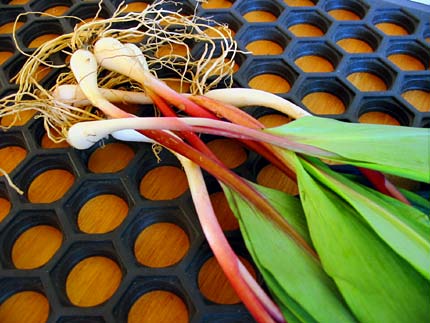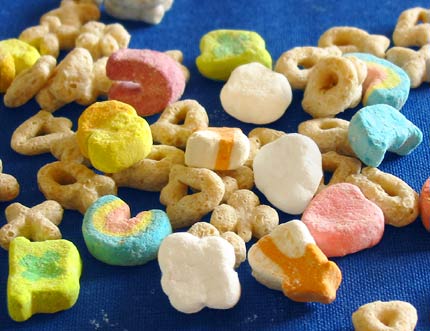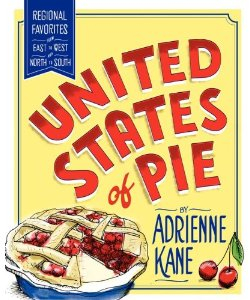 House porn– magazines like Dwell, and Architectural Digest, that make you scratch your chin, and wonder, “Does anyone truly live like this?” Sure we love them, maybe we even steal ideas from them, or hold them up as models of something we some day aspire to, but ultimately are they good for us?
House porn– magazines like Dwell, and Architectural Digest, that make you scratch your chin, and wonder, “Does anyone truly live like this?” Sure we love them, maybe we even steal ideas from them, or hold them up as models of something we some day aspire to, but ultimately are they good for us?
I bought some cookbooks recently, and food porn they were. Actually it seems that more and more these days it’s difficult to buy a cookbook that is not porny. Blurry fruitbowls, whisks, frosted with beaten egg whites, haphazardly thrown about pristine kitchen counters, and juicy pieces of meat, hot off the grill, marks perfectly posed, glistening in the noonday sun, have all become commonplace as we glance through the newer cookbooks or flip through the pages of Gourmet magazine. My feeling towards food porn is quite similar to my feelings towards house porn; revel in it I will (you might even see my versions of food porn on this site), but I will always question its need.
I have plenty of cookbooks, dog-eared, and stained with little bits of food and drips of sauces, that do not have a single picture in them. And are they any worse because of this fact? Absolutely not. Are the foods that they are carefully explaining how to make poorer in quality? Of course not. In fact, it could be argued that these books have a certain freedom to them by not containing pictures, that the food benefits from the freedom that is supplied by not lavishly displaying its wares. Sometimes when a recipe displays the final product, perfectly sliced, free of gristle, with just the right amount of sauce to adorn not drown, I feel pressure to perform. I get disappointed when the dessert I made, delicious though it may be, does not look just right.
When I was in the 4th grade we had a California Missions project. Each student in the class was assigned a different Mission on which to do a class project, culminating in a scale model-making of your assigned Mission. I asked for my mothers help, and although she sat with me as I placed little plastic monks, tonsures gleaming, around my Mission, never once did she simply do it for me. This was for two reasons: 1. This would have been cheating, it was my project assignment not hers. 2. She didn’t want me to feel badly about not having my Mission turn out exactly right, knowing that a woman in her mid 40′s could produce a far better Mission than a girl of 10. Do you get what I am saying?
And so, let me vow now to continue my cookbook collecting, giving equal shelf space to the picture-less, as well as the porny. Taking pictures of food is fun, Gaussian blurring is a gas, and I will indulge in all of these things in the future. But I will try very hard to not feel badly about the foods that I prepare from the porny books, and I will say to myself: No ones (insert name of food being prepared here) really looks like that.


 When you have breakfasted both well and amply, if you swallow a generous cup of good chocolate at the end of the meal, you will have digested the whole perfectly in comfort…Out of zeal for science, and by sheer force of eloquence, I have persuaded not a few ladies to make this experiment, although they thought to die of it; in every case they were delighted with the result…Those who habitually drink chocolate are conspicuous for unfailing health and immunity from the host of little ills which mar the enjoyment of life; their weight is also less inclined to vary; and these are two advantages which anyone may verify in society and among people whose diet can be ascertained. –Brillat-Savarin
When you have breakfasted both well and amply, if you swallow a generous cup of good chocolate at the end of the meal, you will have digested the whole perfectly in comfort…Out of zeal for science, and by sheer force of eloquence, I have persuaded not a few ladies to make this experiment, although they thought to die of it; in every case they were delighted with the result…Those who habitually drink chocolate are conspicuous for unfailing health and immunity from the host of little ills which mar the enjoyment of life; their weight is also less inclined to vary; and these are two advantages which anyone may verify in society and among people whose diet can be ascertained. –Brillat-Savarin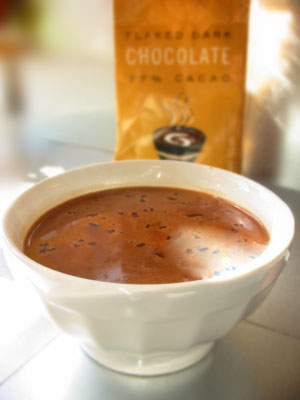


 We all know by now that I am a big fan of desserts. This does not mean however, that I am huge fan of making desserts. Every once in awhile I forget that I don’t loooove to bake, and I jump head first in to some lengthy project involving vanilla beans, too many egg whites beaten to stiff peaks, and a very hot oven. I get impatient. I get frustrated. I go running from the kitchen in a poof of flour, swearing that I will never bake again. That is until the following week, when the entire process starts again.
We all know by now that I am a big fan of desserts. This does not mean however, that I am huge fan of making desserts. Every once in awhile I forget that I don’t loooove to bake, and I jump head first in to some lengthy project involving vanilla beans, too many egg whites beaten to stiff peaks, and a very hot oven. I get impatient. I get frustrated. I go running from the kitchen in a poof of flour, swearing that I will never bake again. That is until the following week, when the entire process starts again.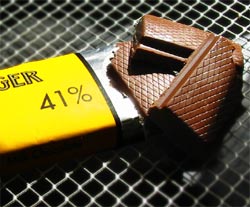 And with the cherry, comes chocolate. Milky, smooth, delicious– the
And with the cherry, comes chocolate. Milky, smooth, delicious– the  A few summers ago, I moved back to the East Bay, and in with Brian. I was thrilled to be back, near the friends and food that I had come to love. I think I remembered Berkeley as being an idyllic community, filled with new places to explore, as well as old haunts to frequent. It’s amazing how being away from a place completely changes how you feel about it. Now Berkeley is home again filled with just as many frustrations as it is filled with joys. But that summer Berkeley was good to me, and I reciprocated with jam– lots of jam.
A few summers ago, I moved back to the East Bay, and in with Brian. I was thrilled to be back, near the friends and food that I had come to love. I think I remembered Berkeley as being an idyllic community, filled with new places to explore, as well as old haunts to frequent. It’s amazing how being away from a place completely changes how you feel about it. Now Berkeley is home again filled with just as many frustrations as it is filled with joys. But that summer Berkeley was good to me, and I reciprocated with jam– lots of jam.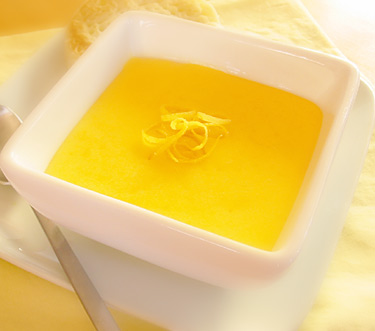
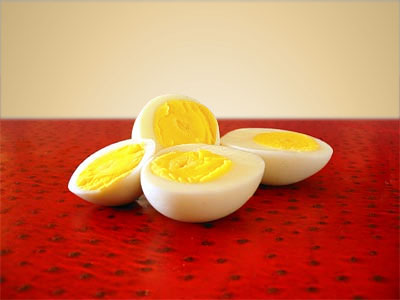
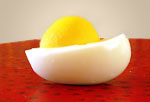 I’m not the hugest fan of savory egg dishes, except frittatas. And while you still won’t see me gobbling up a large plate of scrambled eggs on a Sunday morning, or puncturing the yolk of a fried egg, the bright yellow ooziness quickly sopped up by a piece of generously buttered toast, I am coming around to certain egg dishes. I love a poached egg, and a soft-boiled egg, with all of its various accoutrements, how could you not love it? Certain scrambles, jammed packed with seasonal vegetables and heavy on the cheese are even becoming acceptable to me. But the hard-boiled egg was still difficult for me to consume. I blame it on my mother…
I’m not the hugest fan of savory egg dishes, except frittatas. And while you still won’t see me gobbling up a large plate of scrambled eggs on a Sunday morning, or puncturing the yolk of a fried egg, the bright yellow ooziness quickly sopped up by a piece of generously buttered toast, I am coming around to certain egg dishes. I love a poached egg, and a soft-boiled egg, with all of its various accoutrements, how could you not love it? Certain scrambles, jammed packed with seasonal vegetables and heavy on the cheese are even becoming acceptable to me. But the hard-boiled egg was still difficult for me to consume. I blame it on my mother… It was the sulfuric smell, the yolk crumbly and tinged a greenish-blue, that turned my stomach. But I learned, thanks to Mark Bittman, and his fabulous tome, How to Cook Everything, hard-boiled eggs do not have to be this way. If cooked properly, the white will be springy (not rubbery), and the yolks will be buttery and smooth (not desiccated and tough). That greenish cast over the yolk comes in fact, from over-cooking. The iron that is contained in the yolk, interacts with the sulfur from the white. The longer one cooks the egg, the more heat is transferred through this cooking process, and the more greenish the yolk becomes. How I see it, this greenish cast is equivalent to burning your eggs. Sure they’re edible, but do you really want to eat it.
It was the sulfuric smell, the yolk crumbly and tinged a greenish-blue, that turned my stomach. But I learned, thanks to Mark Bittman, and his fabulous tome, How to Cook Everything, hard-boiled eggs do not have to be this way. If cooked properly, the white will be springy (not rubbery), and the yolks will be buttery and smooth (not desiccated and tough). That greenish cast over the yolk comes in fact, from over-cooking. The iron that is contained in the yolk, interacts with the sulfur from the white. The longer one cooks the egg, the more heat is transferred through this cooking process, and the more greenish the yolk becomes. How I see it, this greenish cast is equivalent to burning your eggs. Sure they’re edible, but do you really want to eat it.